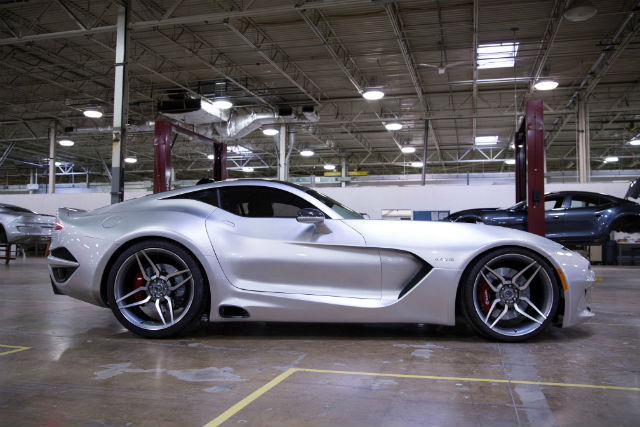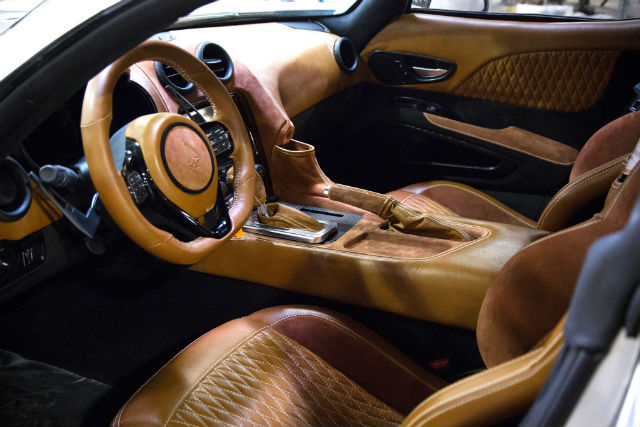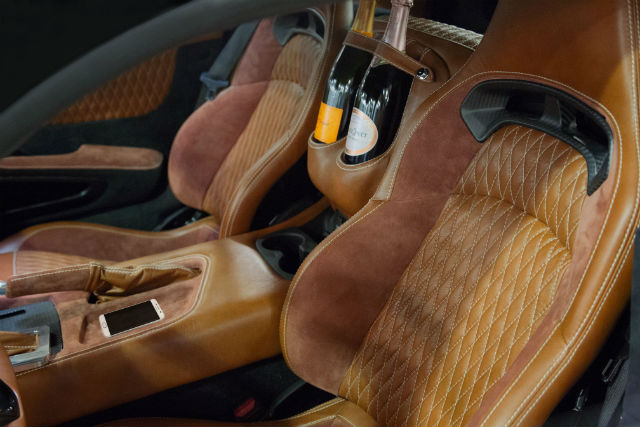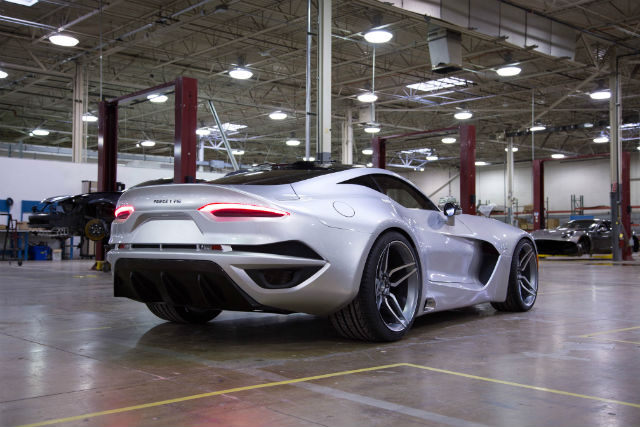Henrik Fisker is one of the more complicated and controversial figures currently in the automotive industry, and despite projecting a picture of Danish suave and charm upon the release of his new Force 1 supercar, getting there has been more of a struggle than seems readily apparent.
For Fisker, the man behind modern beauties like the Aston Martin DB9, BMW Z8 and Galpin Fisker Rocket, the journey to where he is hasn’t been an easy one, but the Force 1 represents a spectacular return to form for the designer.
Having gotten his start working for BMW before moving on to Aston Martin via Ford, Fisker left Ford in 2004 to start his first company, Fisker Coachbuilding. From there, a joint venture with Quantum Technologies saw the formation of Fisker Automotive in 2008 before the financial crash almost brought the company to its knees in 2011.
As of this year, however, he’s back in full force with his newest venture VLF Automotive, which was founded in 2012 alongside Detroit engineer Gilbert Villarreal and famed General Motors overlord Bob Lutz.

Formed as an all-American alternative to European luxury sports marques like Aston, Mercedes AMG, Maserati and the like, VLF Automotive combines Fisker’s knack for the extraordinary with top-quality interiors and outstanding high-performance powertrains.
Tucked away in a modest booth at this year’s North American International Auto Show in Detroit, the company unveiled its latest and greatest creation, the Force 1.
The Force 1 itself had a difficult conception after Fisker’s former employer Aston Martin claimed that the car’s appearance was a rip-off of earlier designs created for the famous British marque’s latest DB10 model.
Reports surfaced earlier in the year that Aston Martin’s lawyers had sent Fisker a letter warning him not to unveil the Force 1 or he would otherwise face legal consequences. Defiant, Fisker launched a $100 million lawsuit against Aston earlier this year, claiming that the company was attempting civil extortion.
Ultra-aggressive, but extremely luxurious
In the meantime, the Force 1 was unveiled in Detroit as planned, and while it’s possible to see some similarities between it and Aston’s DB10, the Force 1 is an entirely different beast altogether.
Refreshingly arrogant in its design, the Force 1 is all Fisker, with an elongated front end that’s reminiscent of the Dodge Viper, with an aggressive carbon fibre diffuser and extreme aerodynamic cut-outs on the sides and bonnet.
A flurry of ultra-aggressive design riffs, it’s the sort of car that a car-crazy teen with a notepad would sketch; an Aston on acid; a Viper that’s wiser and more refined but no less belligerent.
Arguably the car’s best feature is its curved side windows, which follow the line that pulls from the front of the nose, through the side, and ends in elegant curls that point straight down towards its rear. According to Fisker, their main purpose is directly related to the purpose of the car: to look as showy as possible.

“This is an American supercar, and American cars are always about 'show what you got—be upfront,’” he said at the unveiling. “European cars are more about what’s underneath. But this is all about showing the power.”
All show and no go? Absolutely not; that long bonnet is there for a reason. Making up more than half the car’s total length, it houses a massive 8.4-litre V10 engine, with 745 horsepower on tap that’ll take the Force 1 from 0-60mph in three seconds before hitting a 218mph top speed.
Yet some critics have argued that perhaps this isn’t the best time to bring such a car to market, given the focus these days on downsizing and fuel efficiency. Even the world’s foremost hypercars, the McLaren P1, LaFerrari and Porsche 918, all feature hybrid power.
Despite this, Fisker argues that as a result of that, now is the absolute perfect time to bring out the Force 1, claiming that the world is suffering from something of an electric car hangover. “We were overly optimistic about market penetration. But we're not all going to be driving EVs in 5 years,” he said. “There will be a mix."

Perhaps, however, this is reflective of his own electric car hangover; Fisker’s project prior to VLF Automotive was the Fisker Karma, a luxury sports hybrid that beat the Tesla Model S to market when it arrived back in 2011.
Though it was innovative in its time and aimed to be the first plug-in hybrid for people who loved cars and not just the planet, the Karma failed to hit the high target it had set for itself. A combination of competition from Tesla’s Roadster and perhaps simply the fact that it was the right car at the wrong time stopped the Karma from being the runaway success Fisker had hoped it would be.
“We will have electric cars in the future, but just like we don’t want to eat salad every day, we want a steak very once in a while, or maybe a dessert,” he said. “This is steak and dessert.”
One thing that the Force 1 doesn’t seem to be about, and perhaps for the better, is making money. Fisker’s reason for making the car isn’t to crack into the first-adopter market in the way that the Karma was; his latest offering is for wealthy men who want an all-American luxury option.
Only 50 available, deliveries due April
The Force 1’s target audience is expected to already own several other luxury vehicles like Land Rovers, McLarens and the like, and will relish the opportunity to buy something born in the USA but which doesn’t suffer on quality.
As a result, the Force 1 doesn’t really have any direct competitors. The closest anyone comes is Ford’s new GT, but that’s more like a roadgoing version of a Le Mans race car than a high-performance luxury vehicle.
“If you want to spend over $200,000, it's hard to find an American car like this. You have to buy a foreign car,” he said. “I just find it strange that there isn't competition for the Europeans. There is a niche for us.”
Better still, thanks to the fact that the car is being built in pre-existing facilities in California and Michigan, the construction cost is relatively low, even when it uses elements like a bare carbon fibre roof and slots for champagne bottles in place of cupholders.

Of course, none of this will come cheap for mere mortals. VLF is planning to make only 50 examples of the Force 1, each one priced from around £189,000, making it roughly as expensive as the Lamborghini Huracan.
If you’re interested, you’d better act quickly too. Available exclusively through ViperExchange.com, first deliveries of the VLF Automotive Force 1 are due to begin this April.
As for Fisker, well, he’s already hard at word on his latest projects, a new Benetti yacht that’s due to be unveiled in Miami next month and a new reality TV show in partnership in Esquire that’s something like the X Factor for car designers.
Having battled his fair share of difficulties with the industry, you’d forgive him for not investing 100 per cent of his hopes and dreams in his latest venture. More than anything, the Force 1 is an exercise for a prolific designer who just loves making cars.

“When I design a car, I want people to look at it and go, ‘Wow, that’s kind of interesting’ and do a second take,” he said. “When you are pulling into a restaurant for dinner, you will be the only one to have this car. We want to be a little niche player with this company, to offer that to people.”
Given the Force 1’s tiny production numbers, niche player seems to be the name of the game, but if you’re able and willing to pay for the exclusivity, they don’t come much more exclusive than this.



